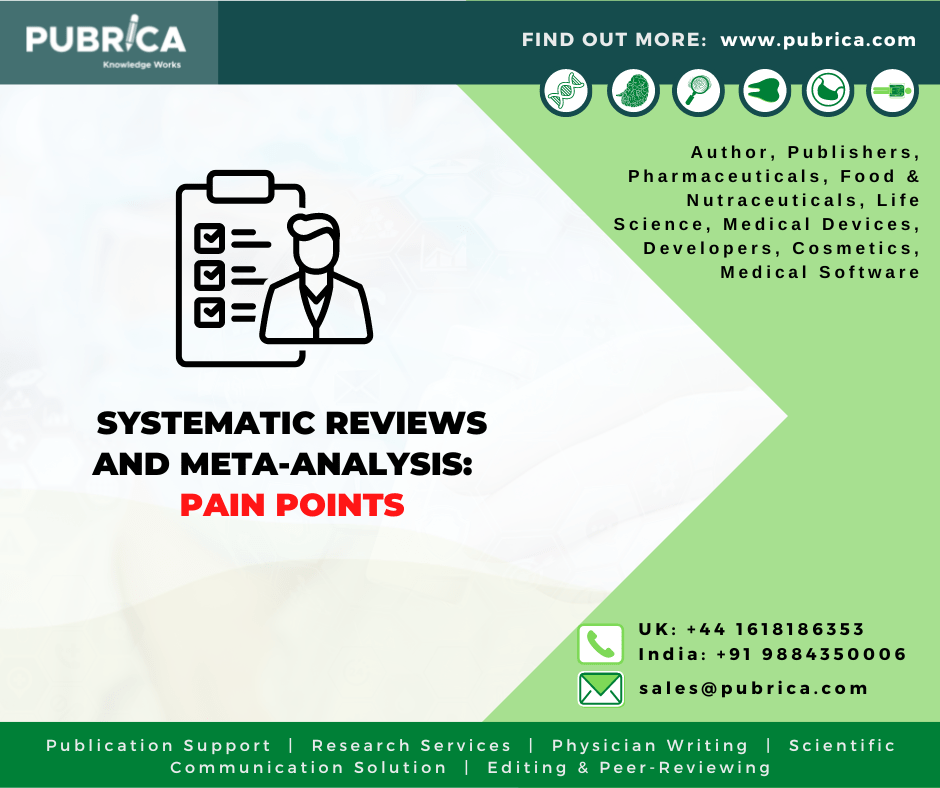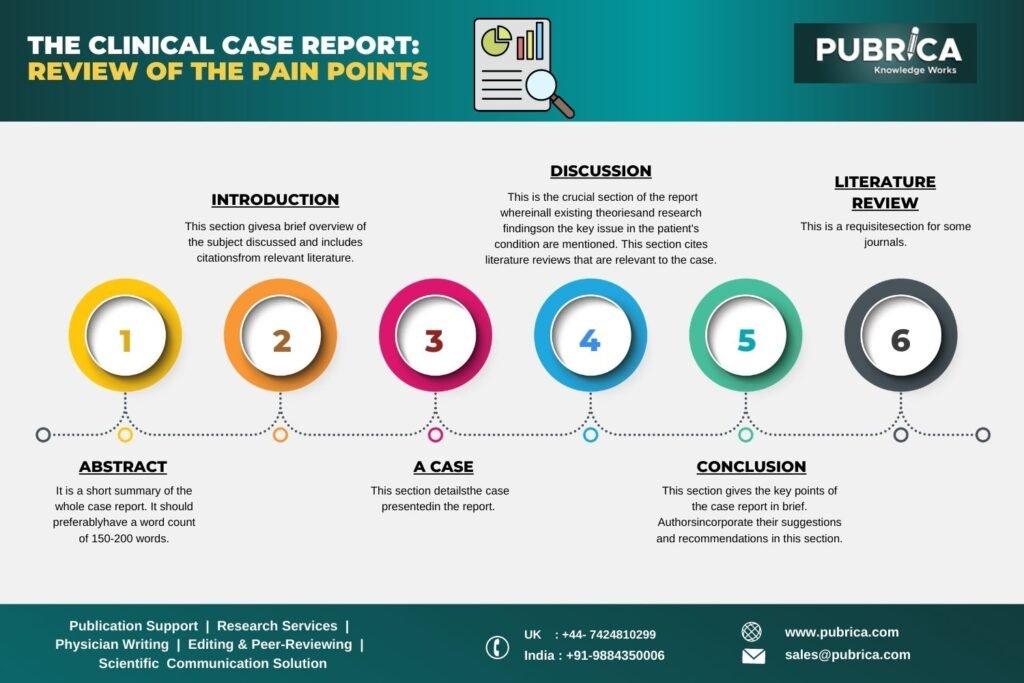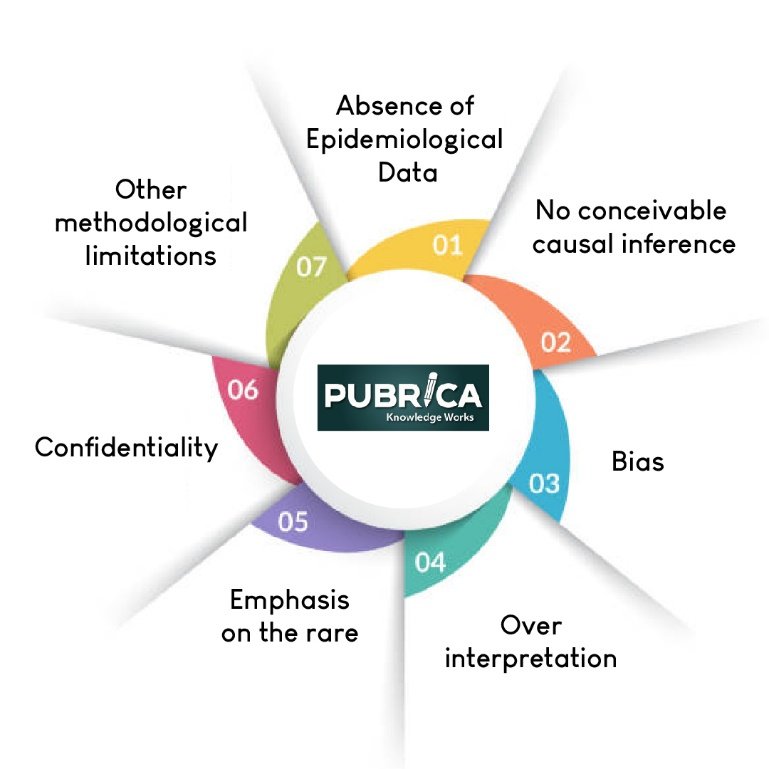
Systematic Reviews and Meta-Analysis: Pain Points
September 2, 2022
Systematic Reviews and Meta-Analysis in the Medical Sciences: Best Practice Methods for Research Synthesis
October 1, 2022The clinical case report has a long history in the literature of medicine. Case reports are still discussed in many medical publications, despite their scientific value decreasing as more cutting-edge research techniques have gained popularity. While some academics claim that the genre is underestimated, others point out its significance for medical advancement is limited. With reference to the benefits and restrictions of the case report genre, we tried to convey the numerous suffering points of view. We looked for papers and book chapters addressing the benefits and drawbacks of clinical case reports and case series using Google Scholar, PubMed, and a few textbooks on epidemiology and medical research.
Introduction

The clinical case report and case report series have been essential parts of medical literature for a very long time. The case report genre was popular until the second half of the 20th century when it began to recede away. The development of evidence-based medicine was facilitated by new research article approaches. In order to accommodate these research articles, editors had to convey their lack of excitement for publishing medical case study report case reports. One or more cases—typically only one—make up a case report, and three to 10 cases make up the majority of case series, or case series reports. Case reports are often detailed and lifelike. But occasionally, they may be forward-looking and adventurous.

- Absence of epidemiological data
Case reports are unable to produce data on rates, ratios, occurrences, or prevalence since they are not drawn from typical population samples. As the numerator of the equation, the case or cases have no denominator.
- No conceivable causal inference
A non-controlled observation cannot be used to infer causation, and an association may not always indicate a cause-and-effect connection. The observed behaviour or incident may be just a coincidence.
- Bias
Publication bias could function as a barrier, and journals often more prefer positive results. Only 10% of case series and 5% of case reports showed treatment failures, according to one group of researchers who examined help in case reports from the Lancet.
- Over interpretation
The propensity or inclination to generalize when there is no foundation for it is known as over-interpretation or misunderstanding—additionally known as “the anecdotal fallacy,” it. This is not a flaw inherent in the methodology. The tendency for case reports to frequently evoke strong emotions in readers may be the cause of over-interpretation.
- Emphasis on the rare
Case report writing help frequently deals with the unusual and unusual, which may draw readers’ attention away from common illnesses and issues.
- Confidentiality
Patients must now provide journals with written informed consent before case reports may be published. Securing confidentiality is the joint responsibility of writers and publishers, and complete secrecy cannot always be guaranteed. Despite every effort to maintain patient anonymity, the patient will occasionally be recognized.
- Other methodological limitations
After the pertinent occurrence, which is the observation, case reports and series are prepared. The reports are therefore created in the past. Not all relevant information may be in the patient’s medical file. Recall bias may make it difficult for us to obtain crucial information from the patient or other informants, including family members and medical personnel.
Conclusions
The observant doctor must decide if the case report approach is an ideal article type before producing a case series or case report based on the patient or patients in question. This review may help with that assessment and potentially catalyze the ongoing discussion among physicians about the importance of case reporting.
About Pubrica
The writers and researchers at Pubrica provide articles about science and medicine that are extremely useful for authors and practitioners. Pubrica medical writers may help you draft and improve the introduction by highlighting any gaps or restrictions in the chosen study field. Our professionals are familiar with the organization that comes after the broad topic, the issue, and the context before going on to a specific subject to provide the hypothesis.
References
- Nissen, T., Wynn, R. The clinical case report: a review of its merits and limitations. BMC Res Notes 7, 264 (2014).
- Nissen, Trygve, and Rolf Wynn. “The recent history of the clinical case report: a narrative review.” JRSM short reports 3.12 (2012): 1-5.



What are the key points to reflect while considering the case report series in BMJ?
Read more